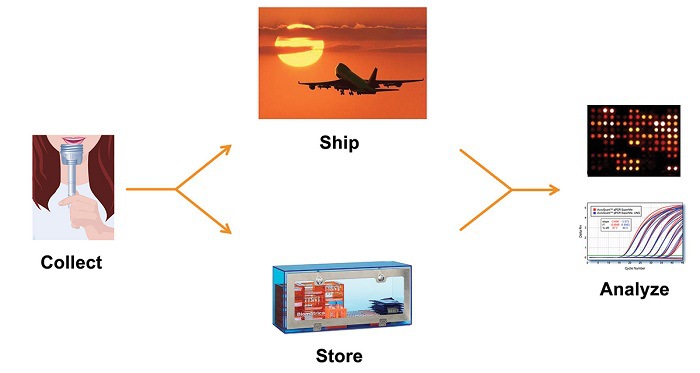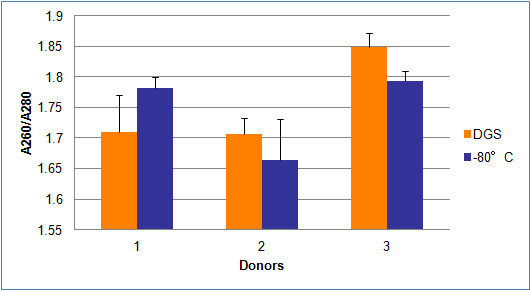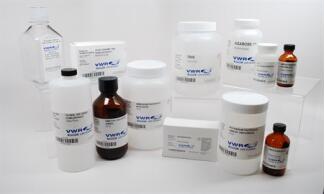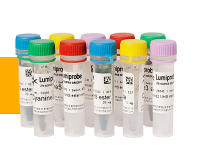|
产品货号:ZZK-K-INTDF
产品品名:综合总膳食纤维检测试剂盒
英文品名:Integrated Total Dietary Fibre Assay Kit
规格型号:100 assays per kit
AOAC Method 2009.01 & 2011.25, AACC Method 32-45.01 & 32-50.01
INTRODUCTION:
It is generally believed1-3 that an increased consumption of dietaryfibre (DF) will lead to a reduction in conditions such as constipation,diabetes, obesity, coronary heart disease and others. In the 1970’sTrowell had developed a definition of dietary fibre which evolved in19763 to:
“Dietary fibre consists of the remnants of edible plant cells,polysaccharides, lignin, and associated substances resistant todigestion by the alimentary enzymes of humans.”
This definition defines a macro constituent of foods which includescellulose, hemicellulose, lignin, gums, modified celluloses, mucilages,oligosaccharides, pectins and associated minor substances such as waxes,cutin, and suberin.
On the basis of this definition3, appropriate methodology for themeasurement of DF was developed by a consortium of researchers in Europeand USA. This led to AOAC Official Method 985.29 (the Prosky method),4,5and to subsequent modifications of this method, including AOAC OfficialMethod 991.434 in which the buffers were changed. The aim of thesemethods was to give an accurate measurement of the content of totaldietary fibre in plant products and food materials. More specifically,the methodology aimed at hydrolysing and removing starch and protein.Fats were removed by the solvents employed to recover the non-hydrolysedmaterial. From the outset, it was realised that all protein was nothydrolysed, so each sample was then analysed in duplicate and residuesrecovered and weighed. One of these residues is analysed for ash contentand the other for protein. These weights are subtracted from the averageof the residue weights. It was also realised that, in the analyticalprocedure, starch also was not completely hydrolysed and removed. Thisin turn led to the discovery of so-called “resistant starch (RS)”. Thequestion then was, “should RS be measured and added to the total dietaryfibre value, or should it be analytically removed and ignored?” Since RSescapes digestion in the human small intestine, the general consensus isthat it should be accurately measured and included. Research in the1990’s showed that AOAC Official Method 991.43 underestimates RS, soalternative methods for the measurement of this component were developedand evaluated. While most of these new methods gave similar results fora range of RS containing samples, none of the methods survived therigours of interlaboratory evaluation except that of McCleary et al.6(AOAC Method 2002.02), which also gave results in line with thoseobtained from ileostomy patients.
In the mid-1990’s it was generally agreed that dietary fibre shouldalso include non-digestible oligosaccharides (NDO), as these behavedphysiologically as dietary fibre. Specific methods were developed forfructan [and fructo-oligosaccharides (FOS)] (AOAC Methods 997.08
1
and 999.03)7,8, galacto-oligosaccharides (GOS) (AOAC Method
2001.03)9, resistant maltodextrins (RMD) (AOAC Method 2001.03)10
and Polydextrose? (AOAC Method 2000.11)11. The development
of these methodologies was very useful for ingredient developers,
food manufacturers and analysts measuring the specific component.
However, for those interested in measuring the total dietary fibre
content of a material, a problem was introduced. For many of
these specific carbohydrates (including RS, inulin and resistant
maltodextrins) a portion of the component is also measured by
AOAC Official method 985.29 and 991.43. Thus if the value for a
component determined using the specific method is added to the
total dietary fibre value, some of the component is double counted.
This is clearly depicted in Figure 1.
Figure 1. Components measured, and not measured, by AOAC
Official Methods 985.29 and 991.43.
This problem of potential double counting led us to research and
develop a procedure that allows the measurement of total dietary
fibre, which includes RS and NDO. This integrated total dietary
fibre (INTDF) procedure is depicted in Figure 2 and is modelled on
AOAC Official Methods 2002.02 (resistant starch), 991.43 (total
dietary fibre) and 2001.03 (resistant maltodextrins). The theory
of this method is discussed in detail in McCleary (2007)12 and has
been successfully subjected to an interlaboratory evaluation through
AOAC International (AOAC Method 2009.01)13. A modified method
for separately measuring insoluble dietary fibre (IDF), dietary fibre
soluble in water but precipitated in 78% aqueous ethanol (SDFP),
and dietary fibre soluble in water and not precipitated in 78%
aqueous ethanol (SDFS) has also been successfully evaluated (AOAC
Method 2011.25)14. SDFP was previously termed high molecular
weight soluble dietary fibre (HMWSDF) and SDFS was previously
termed low molecular weight soluble dietary fibre (LMWSDF) and is
also referred to as non-digestible oligosaccharides (NDO).
Several minor modifications to ensure complete measurement of FOS
and complete removal of non-resistant maltodextrins are described
Total Dietary Fibre
(AOAC Method 985.29)
(AOAC Method 991.43)
Polydextrose
Fibersol 2
Resistant Starch
Cellulose
Beta-Glucan
Galactomannan
Arabinoxylan
Galacto-oligosaccharides
Raffinose/Stachyose
Pectin
Arabinogalactan
Inulin FOS
Figure 2. Principle of the Integrated (Codex compliant) Total DietaryFibre assay procedure showing separate measurement of IDF, SDFP and SDFS.
In November 2008, the Codex Committee on Nutrition and Foods forSpecial Dietary Uses (CCNFSDU) established a definition for dietaryfibre. This definition was accepted by the Codex Alimentarius Commission(CAC) in 2009 (FAO, 2009)16, marking the achievement of international consensus:
“Dietary fiber consists of carbohydrate polymers with ten or moremonomeric units, which are not hydrolyzed by the endogenous enzymes inthe small intestine of humans and belong to the following categories:edible carbohydrate polymers naturally occurring in the food asconsumed; carbohydrate polymers which have been obtained from food rawmaterial by physical, enzymatic or chemical means and which have beenshown to have a physiological effect of benefit to health asdemonstrated by generally accepted scientific evidence to competentauthorities, and; synthetic carbohydrate polymers which have been shownto have a physiological effect of benefit to health as demonstrated bygenerally accepted scientific evidence to competent authorities.
a) When derived from a plant origin, dietary fiber may includefractions of lignin and/or other compounds when associated withpolysaccharides in the plant cell walls and if these compounds arequantified by the AOAC gravimetric analytical method for dietary fibreanalysis: fractions of lignin and the other compounds (proteicfractions, phenolic compounds,
by McCleary et al. (2013)15, as also are the problems in measurement ofRS4 (starch granules chemically cross-linked with phosphate groups).
Sample (1.00 g) in sealed
250 mL bottle (in duplicate)
Add Maleate buffer + pancreatic α-amylase (PAA) + AMG
Add Trizma Base to adjust pH to ~ 8.2
Add Acetic acid (to adjust pH to ~ 4.3) + Sorbitol (Internal Standard)
Add protease
Remove 1 mL for Available
CHO Determination
Add 4 volumes of ethanol to precipitate SDFP
SDFP (precipitate)
SDFS (?ltrate)
SDFP + SDFS in filtrate
Filter through crucible with celite
IDF residue
Incubate in shaking water bath at 37°C for 16 h.
Incubate at 100°C for 20 min. Cool to ~ 60°C.
Incubate at 60°C for 30 min. Cool to room temperature.
waxes, saponins, phytates, cutin, phytosterols, etc.) intimately“associated” with plant polysaccharides in the AOAC 991.43 method.
b) De cision on whether to include carbohydrates of 3 to 9 monomericunits should be left up to national authorities.”
The Integrated TDF method described in this booklet, as originallypublished in 200712, has been successfully subjected to interlaboratoryevaluation through AOAC International (Methods 2009.0113 and 2011.2514),and accepted by Codex Alimentarius as a Type I method (March, 2011).
KITS:
Kits suitable for performing 100 determinations of TDF (IntegratedProcedure) are available from Megazyme. The kits contain the full assaymethod plus:
Bottle 1: Concentrated pancreatic α-amylase (E-PANAA);
g, 150,000 Ceralpha Units/g.
Stable for 大于 5 years stored dry at -20°C.
Bottle 2: Amyloglucosidase (E-AMGDF) (20 mL,
3300 Units/mL).
Stable for 大于 3 years at 4°C.
Bottle 3: Puri?ed protease (E-BSPRT) (10 mL, 350 tyrosine units/mL).
Stable for 大于 3 years at -20°C.
Bottle 4: LC Retention Time Standard [maltodextrins plus maltose (4:1ratio), approx 5 g].
Stable for 大于 3 years when stored dry at room temperature.
Bottle 5: D-Sorbitol (approx. 12 g, dry).
Stable for 大于 3 years when stored dry at room temperature.
Celite 545?, acid washed, in 100 g or 500 g packages (cat. no.
G-CEL100, or cat. no. G-CEL500), Amberlite FPA53? (OH-)
(cat. no. G-AMBOH, 2.5 Kg) and Ambersep 200? (H+) (cat. no.
G-AMBH, 2.5 Kg) ion exchange resins are available separately from Megazyme.
温馨提示:需要详细的产品使用说明书,请联系金畔生物客服人员,我们将竭诚为您服务。
金畔,甄心倾听您每一个标准!
更多产品,更多优惠!请联系我们!
上海金畔生物科技有限公司
文章号:=2255JP2255
|









